NASA, USA - July 03, 2018 - A new study using data from NASA's NuSTAR space telescope suggests that Eta Carinae, the most luminous and massive stellar system within 10,000 light-years, is accelerating particles to high energies - some of which may reach Earth as cosmic rays. Astronomers know that cosmic rays with energies greater than 1 billion electron volts (eV) come to us from beyond our solar system.
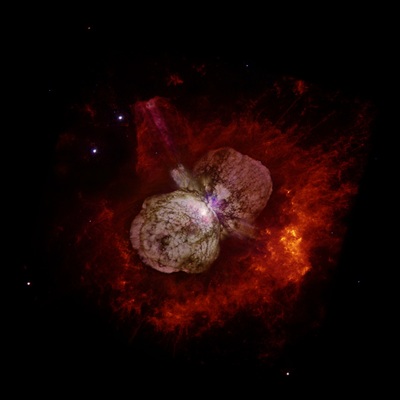 |
Eta Carinae's great eruption in the 1840s created the billowing Homunculus Nebula, imaged here by Hubble.
Now about a light-year long, the expanding cloud contains enough material to make at least 10 copies of our Sun.
Astronomers cannot yet explain what caused this eruption.
Photo courtesy of NASA, ESA, and the Hubble SM4 ERO Team |
| |
NASA, USA - July 03, 2018
By Francis Reddy
NASA's Goddard Space Flight Center, Greenbelt, Md.
A new study using data from NASA’s NuSTAR space telescope suggests that Eta Carinae, the most luminous and massive stellar system within 10,000 light-years, is accelerating particles to high energies — some of which may reach Earth as cosmic rays.
https://www.nasa.gov/mission_pages/nustar/main/index.html
https://imagine.gsfc.nasa.gov/science/toolbox/cosmic_rays1.html
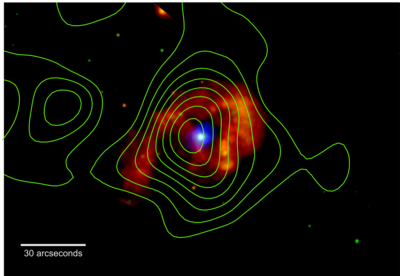 |
Eta Carinae shines in X-rays in this image from NASA's Chandra X-ray Observatory.
The colors indicate different energies. Red spans 300 to 1,000 electron volts (eV), green ranges from 1,000 to 3,000 eV and blue covers 3,000 to 10,000 eV.
For comparison, the energy of visible light is about 2 to 3 eV.
NuSTAR observations (green contours) reveal a source of X-rays with energies some three times higher than Chandra detects.
X-rays seen from the central point source arise from the binary’s stellar wind collision.
The NuSTAR detection shows that shock waves in the wind collision zone accelerate charged particles like electrons and protons to near the speed of light. Some of these may reach Earth, where they will be detected as cosmic ray particles.
X-rays scattered by debris ejected in Eta Carinae's famous 1840 eruption may produce the broader red emission.
Photo courtesy of NASA/CXC and NASA/JPL-Caltech |
| |
“We know the blast waves of exploded stars can accelerate cosmic ray particles to speeds comparable to that of light, an incredible energy boost,” said Kenji Hamaguchi, an astrophysicist at NASA’s Goddard Space Flight Center in Greenbelt, Maryland, and the lead author of the study.
“Similar processes must occur in other extreme environments. Our analysis indicates Eta Carinae is one of them.”
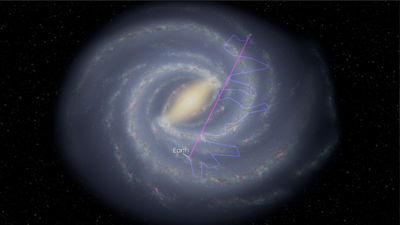 |
Because cosmic rays carry electric charge, their direction changes as they travel through magnetic fields.
By the time the particles reach us, their paths are completely scrambled, as shown by the blue path.
We can't trace them back to their sources.
Light travels to us straight from their sources, as shown by the purple path.
Photo courtesy of NASA's Goddard Space Flight Center |
| |
Astronomers know that cosmic rays with energies greater than 1 billion electron volts (eV) come to us from beyond our solar system.
But because these particles — electrons, protons and atomic nuclei — all carry an electrical charge, they veer off course whenever they encounter magnetic fields.
This scrambles their paths and masks their origins.
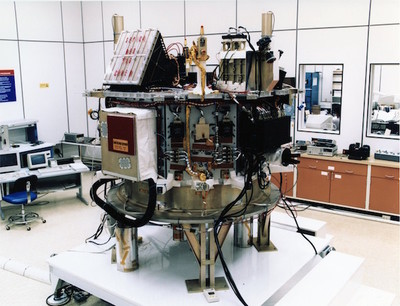 |
The Cosmic Ray Isotope Spectrometer (CRIS - the box on the left of the spacecraft, with a yellow label) on the Advanced Composition Explorer (ACE) spacecraft provides measurements of the isotopes of galactic cosmic ray nuclei ranging from helium to zinc.
ACE launched in August 1997.
Photo courtesy of NASA / Johns Hopkins University Applied Physics Laboratory |
| |
Eta Carinae, located about 7,500 light-years away in the southern constellation of Carina, is famous for a 19th century outburst that briefly made it the second-brightest star in the sky. This event also ejected a massive hourglass-shaped nebula, but the cause of the eruption remains poorly understood.
https://www.nasa.gov/content/goddard/astronomers-bring-the-third-dimension-to-a-doomed-stars-outburst
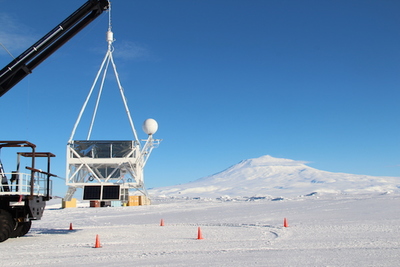 |
SuperTIGER hanging from the launch vehicle just before its December 2012 launch with Mount Erebus in the background.
SuperTIGER is a cosmic-ray balloon instrument measuring cosmic-rays heavier than iron to explore the source of cosmic rays and their acceleration sites.
SuperTIGER's first flight lasted for 55 days, a record in duration for an Antarctic long duration scientific balloon payload.
Photo courtesy of Ryan Murphy / Washington University |
| |
The system contains a pair of massive stars whose eccentric orbits bring them unusually close every 5.5 years.
The stars contain 90 and 30 times the mass of our Sun and pass 140 million miles (225 million kilometers) apart at their closest approach — about the average distance separating Mars and the Sun.
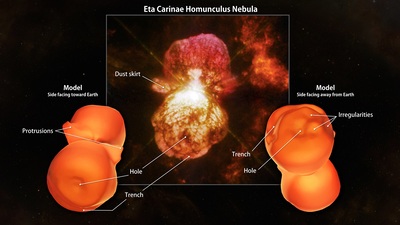 |
A new shape model of the Homunculus Nebula reveals protrusions, trenches, holes and irregularities in its molecular hydrogen emission.
The protrusions appear near a dust skirt seen at the nebula's center in visible light (inset) but not found in this study, so they constitute different structures.
Photo courtesy of NASA Goddard (inset: NASA, ESA, Hubble SM4 ERO Team) |
| |
“Both of Eta Carinae’s stars drive powerful outflows called stellar winds,” said team member Michael Corcoran, also at Goddard.
“Where these winds clash changes during the orbital cycle, which produces a periodic signal in low-energy X-rays we’ve been tracking for more than two decades.”
https://www.nasa.gov/content/goddard/nasa-observatories-take-an-unprecedented-look-into-superstar-eta-carinae
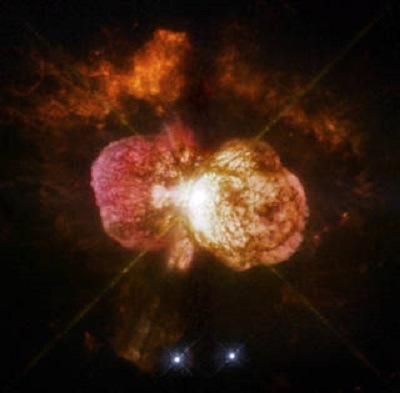 |
Eta Carinae's great eruption in the 1840s created the billowing Homunculus Nebula, imaged here by Hubble.
Now about a light-year long, the expanding cloud contains enough material to make at least 10 copies of our sun.
Astronomers cannot yet explain what caused this eruption.
Photo courtesy of NASA, ESA, and the Hubble SM4 ERO Team |
| |
NASA’s Fermi Gamma-ray Space Telescope also observes a change in gamma rays — light packing far more energy than X-rays — from a source in the direction of Eta Carinae.
But Fermi’s vision isn’t as sharp as X-ray telescopes, so astronomers couldn’t confirm the connection.
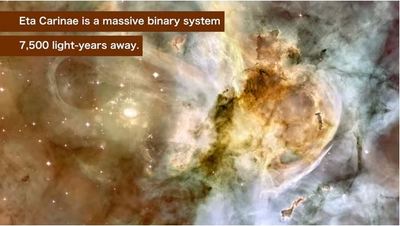 |
| Photo courtesy of NASA's Goddard Space Flight Center |
| |
To bridge the gap between low-energy X-ray monitoring and Fermi observations, Hamaguchi and his colleagues turned to NuSTAR.
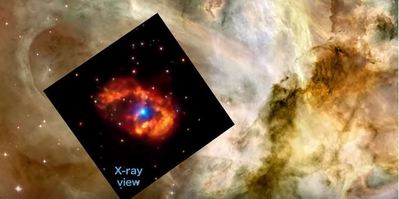 |
| Photo courtesy of NASA's Goddard Space Flight Center |
| |
Launched in 2012, NuSTAR can focus X-rays of much greater energy than any previous telescope.
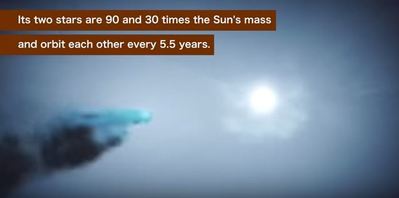 |
| Photo courtesy of NASA's Goddard Space Flight Center |
| |
Using both newly taken and archival data, the team examined NuSTAR observations acquired between March 2014 and June 2016, along with lower-energy X-ray observations from the European Space Agency’s XMM-Newton satellite over the same period.
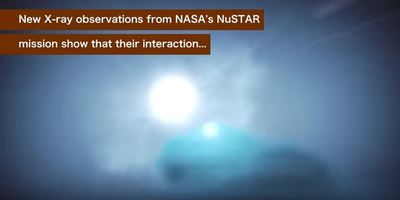 |
| Photo courtesy of NASA's Goddard Space Flight Center |
| |
Eta Carinae’s low-energy, or soft, X-rays come from gas at the interface of the colliding stellar winds, where temperatures exceed 70 million degrees Fahrenheit (40 million degrees Celsius).
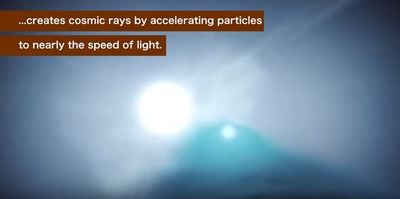 |
| Photo courtesy of NASA's Goddard Space Flight Center |
| |
But NuSTAR detects a source emitting X-rays above 30,000 eV, some three times higher than can be explained by shock waves in the colliding winds.
For comparison, the energy of visible light ranges from about 2 to 3 eV.
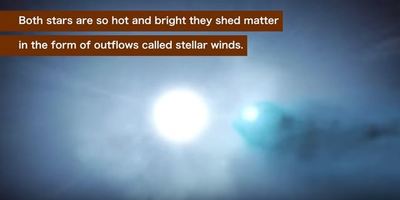 |
| Photo courtesy of NASA's Goddard Space Flight Center |
| |
The team’s analysis, presented in a paper published on Monday, July 2, in Nature Astronomy, shows that these “hard” X-rays vary with the binary orbital period and show a similar pattern of energy output as the gamma rays observed by Fermi.
https://www.nasa.gov/content/goddard/nasa-observatories-take-an-unprecedented-look-into-superstar-eta-carinae
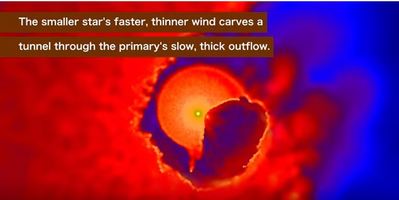 |
| Photo courtesy of NASA's Goddard Space Flight Center |
| |
The researchers say that the best explanation for both the hard X-ray and the gamma-ray emission is electrons accelerated in violent shock waves along the boundary of the colliding stellar winds.
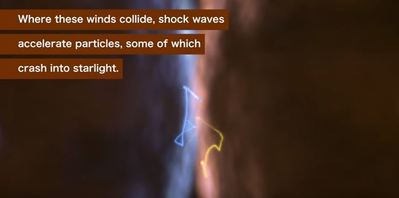 |
| Photo courtesy of NASA's Goddard Space Flight Center |
| |
The X-rays detected by NuSTAR and the gamma rays detected by Fermi arise from starlight given a huge energy boost by interactions with these electrons.
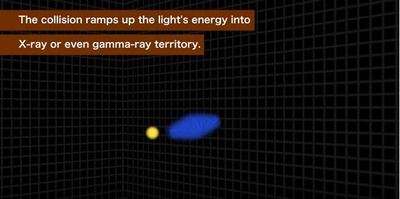 |
| Photo courtesy of NASA's Goddard Space Flight Center |
| |
Some of the superfast electrons, as well as other accelerated particles, must escape the system and perhaps some eventually wander to Earth, where they may be detected as cosmic rays.
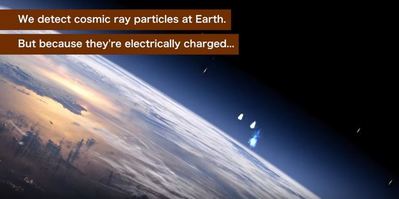 |
| Photo courtesy of NASA's Goddard Space Flight Center |
| |
“We’ve known for some time that the region around Eta Carinae is the source of energetic emission in high-energy X-rays and gamma rays”, said Fiona Harrison, the principal investigator of NuSTAR and a professor of astronomy at Caltech in Pasadena, California.
“But until NuSTAR was able to pinpoint the radiation, show it comes from the binary and study its properties in detail, the origin was mysterious.”
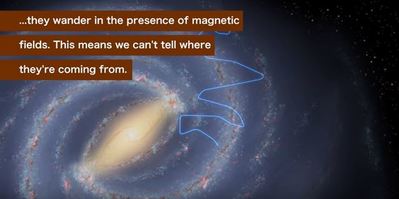 |
| Photo courtesy of NASA's Goddard Space Flight Center |
| |
NuSTAR is a Small Explorer mission led by Caltech and managed by JPL for NASA's Science Mission Directorate in Washington.
NuSTAR was developed in partnership with the Danish Technical University and the Italian Space Agency (ASI).
The spacecraft was built by Orbital Sciences Corp., Dulles, Virginia, USA.
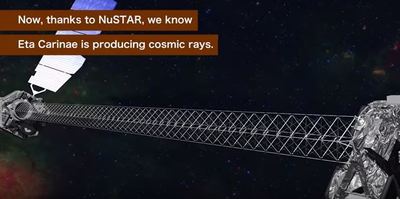 |
| Photo courtesy of NASA's Goddard Space Flight Center |
| |
NuSTAR's mission operations center is at UC Berkeley, and the official data archive is at NASA's High Energy Astrophysics Science Archive Research Center.
ASI provides the mission's ground station and a mirror archive.
Caltech manages JPL for NASA.
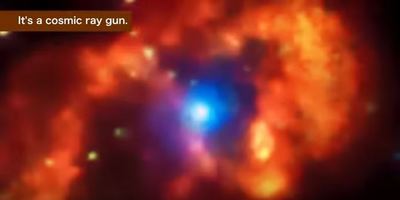 |
| Photo courtesy of NASA's Goddard Space Flight Center |
| |
For more information on NuSTAR, visit:
https://www.nasa.gov/nustar
http://www.nustar.caltech.edu
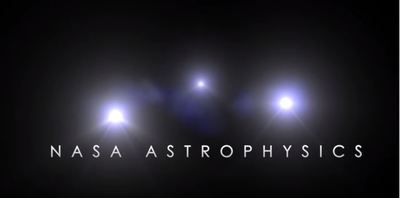 |
| Photo courtesy of NASA's Goddard Space Flight Center |
| |
Video
Superstar Eta Carinae Shoots Cosmic Rays
https://www.youtube.com/watch?v=B4PwWDNc9qM
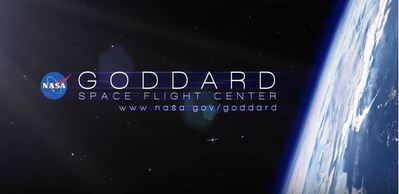 |
| Photo courtesy of NASA's Goddard Space Flight Center |
| |
Source: NASA
https://www.nasa.gov/
ASTROMAN Magazine - 2018.05.01
NASA Sets Sights on May 5 Launch of InSight Mars Mission
https://www.astroman.com.pl/index.php?mod=magazine&a=read&id=2498
ASTROMAN Magazine - 2018.04.11
Bound for Mars: Countdown to First Interplanetary Launch from California
https://www.astroman.com.pl/index.php?mod=magazine&a=read&id=2482
ASTROMAN Magazine - 2018.02.08
SpaceX: Falcon Heavy Test Launch
https://www.astroman.com.pl/index.php?mod=magazine&a=read&id=2440
ASTROMAN Magazine - 2018.02.02
NASA: Celebrating 60 Years of Groundbreaking U.S. Space Science
https://www.astroman.com.pl/index.php?mod=magazine&a=read&id=2435
ASTROMAN Magazine - 2018.02.02
NASA: Studying the Van Allen Belts 60 Years After America’s First Spacecraft
http://www.astroman.com.pl/index.php?mod=magazine&a=read&id=2434
ASTROMAN Magazine - 2017.10.04
Lockheed Martin Completes First Flexible Solar Array for LM 2100 Satellite
https://www.astroman.com.pl/index.php?mod=magazine&a=read&id=2352
ASTROMAN Magazine - 2017.08.24
Airbus' Solar Orbiter on track to launch before next total solar eclipse
https://www.astroman.com.pl/index.php?mod=magazine&a=read&id=2319
ASTROMAN Magazine - 2017.08.12
Lockheed Martin Successfully Integrates First Modernized A2100 Satellite
https://www.astroman.com.pl/index.php?mod=magazine&a=read&id=2311
ASTROMAN Magazine - 2017.06.04
Airbus: First high power all-electric satellite, EUTELSAT 172B, launched by Ariane
https://www.astroman.com.pl/index.php?mod=magazine&a=read&id=2268
ASTROMAN Magazine - 2017.06.03
Boeing Satellite for ViaSat to Significantly Enhance Satellite Broadband Communications
https://www.astroman.com.pl/index.php?mod=magazine&a=read&id=2267
ASTROMAN Magazine - 2017.04.07
European Space Agency: Exoplanet mission gets ticket to ride
https://www.astroman.com.pl/index.php?mod=magazine&a=read&id=2226
ASTROMAN Magazine - 2017.03.31
SpaceX conducts historic Falcon 9 re-flight with SES-10 Mission. Lands booster again
https://www.astroman.com.pl/index.php?mod=magazine&a=read&id=2223
ASTROMAN Magazine - 2017.02.10
European Space Agency: CryoSat reveals lake outbursts beneath Antarctic ice
https://www.astroman.com.pl/index.php?mod=magazine&a=read&id=2192
ASTROMAN Magazine - 2017.02.07
NASA Highlights Science Launching on Next SpaceX Cargo Mission
https://www.astroman.com.pl/index.php?mod=magazine&a=read&id=2190
ASTROMAN Magazine - 2016.12.03
Part-Time Scientists and Audi lunar quattro ready to head for the Moon
https://www.astroman.com.pl/index.php?mod=magazine&a=read&id=2165
ASTROMAN Magazine - 2016.09.11
Airbus Defence and Space's PerúSAT-1 satellite ready for take-off
https://www.astroman.com.pl/index.php?mod=magazine&a=read&id=2118
ASTROMAN Magazine - 2016.08.14
UAE Space Agency, Mubadala and Lockheed Martin Launch Comprehensive Space-based Workforce Development Program
https://www.astroman.com.pl/index.php?mod=magazine&a=read&id=2105
ASTROMAN Magazine - 2016.04.09
SpaceX's Falcon 9 rocket will launch the CRS-8 Dragon Spacecraft Mission for NASA
https://www.astroman.com.pl/index.php?mod=magazine&a=read&id=2053
ASTROMAN Magazine - 2015.10.02
Flight VA226 success: with Sky Muster and ARSAT-2 in orbit, Arianespace serves Australia and Argentina
https://www.astroman.com.pl/index.php?mod=magazine&a=read&id=1972
ASTROMAN Magazine - 2015.07.26
Airbus Defence and Space to build JUICE spacecraft, ESA's next life-tracker inside the Solar System
https://www.astroman.com.pl/index.php?mod=magazine&a=read&id=1941
ASTROMAN Magazine - 2015.07.18
Boeing's 10th GPS IIF to Modernize Worldwide GPS System
https://www.astroman.com.pl/index.php?mod=magazine&a=read&id=1940
ASTROMAN Magazine - 2015.06.14
Boeing to Build Third All-Electric Propulsion Satellite for ABS to Australia, New Zealand, the Middle East, Russia, South Asia
https://www.astroman.com.pl/index.php?mod=magazine&a=read&id=1929
Editor-in-Chief of ASTROMAN magazine: Roman Wojtala, Ph.D.
|

